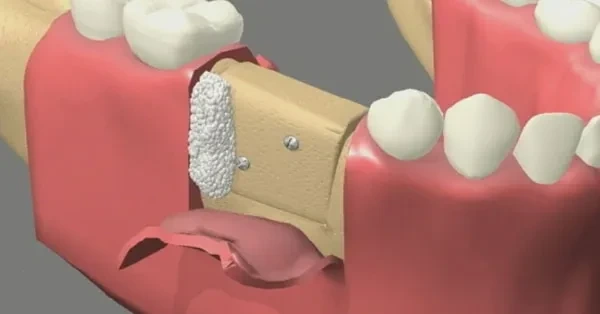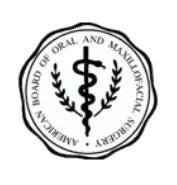Nutrition That Aids Healing of Bone Grafting in Washington
Bone grafting is a vital step in restoring jaw strength and preparing your mouth for future procedures such as dental implants. Whether you’re undergoing bone grafting for structural support, implant preparation, or oral reconstruction, your recovery depends heavily on how well your body heals—and that starts with nutrition. A nutrient-rich diet fuels bone regeneration, minimizes inflammation, and strengthens your immune system for a smoother recovery process.
In our previous blog, we discussed the six stages of healing one goes through after a bone grafting procedure. In this blog, we will go through the dietary guidelines that are necessary for the faster and easier healing of a bone graft.
Top 5 Dietary Tips to Speed Up Bone Graft Healing
As you heal from bone grafting, it’s essential to focus on foods that promote tissue repair and bone formation. Below are five key dietary tips to help your body heal stronger and faster after your procedure.
-
Prioritize Protein-Rich Foods for Tissue Repair
Protein is the building block of every healing process. It aids in the regeneration of tissues, strengthens the jawbone, and accelerates post-surgical recovery. After your procedure for bone grafting in Washington, your body will need more protein than usual to repair the surgical site.
Tips to follow:
- Incorporate soft protein sources like scrambled eggs, Greek yogurt, and tofu.
- Try blending protein smoothies with milk, nut butter, and bananas.
- Choose tender fish such as salmon or tilapia instead of tough meats.
- Include legumes like lentils and chickpeas for plant-based protein.
- Avoid tough or chewy meats that could strain the surgical site.
Why it matters: Protein provides amino acids that build new bone and tissue, ensuring your graft becomes stable and strong.
-
Stay Hydrated and Avoid Acidic Beverages
Hydration is one of the most underrated aspects of recovery. Proper fluid intake helps flush toxins, reduces swelling, and maintains soft tissue elasticity. On the other hand, acidic or sugary drinks can irritate your healing gums and slow bone formation.
Tips to follow:
- Make sure to stay hydrated throughout the day, even if you’re not thirsty.
- Sip herbal teas such as chamomile or mint for soothing relief.
- Avoid carbonated drinks and citrus juices during early healing.
- Use a straw only after your dentist approves, as suction can disrupt clotting.
- Include water-rich foods like cucumber, melon, and soups.
Why it matters: Hydration supports nutrient transport and maintains a clean, moist environment for healing tissues to thrive.
-
Boost Bone Health with Calcium and Vitamin D
Calcium and vitamin D work hand in hand to strengthen bones and ensure proper mineralization of the graft. Without enough of these nutrients, bone regeneration can slow down.
Tips to follow:
- Include dairy products like milk, cheese, and yogurt for natural calcium.
- Eat leafy greens such as kale and spinach, which are gentle on healing gums.
- Choose fortified plant-based milk alternatives (almond or soy).
- Spend 10–15 minutes in sunlight daily to activate vitamin D synthesis.
- Add soft-boned fish like sardines or salmon for extra calcium and vitamin D.
Why it matters: These nutrients help your graft fuse with natural bone, building a solid foundation for future procedures like dental implants in Washington.
-
Include Antioxidant-Rich Foods for Faster Recovery
Antioxidants fight inflammation and protect your cells from oxidative stress caused by surgery. They can also enhance your immune system, reducing the risk of infection during healing.
Tips to follow:
- Add berries like blueberries and strawberries to your smoothies.
- Eat soft, colorful vegetables such as carrots, sweet potatoes, and spinach.
- Include green tea as a gentle antioxidant beverage.
- Try small servings of avocados for vitamin E and healthy fats.
- Avoid spicy or acidic foods that may irritate the surgical site.
Why it matters: Antioxidants accelerate wound healing and support your body’s natural defenses, ensuring a smoother recovery experience.
-
Focus on Soft, Nutrient-Dense Foods to Avoid Strain
During the early healing phase, your jaw and gums are delicate. Consuming soft yet nutrient-packed foods helps protect your graft while still providing essential vitamins and minerals.
Tips to follow:
- Choose mashed potatoes, oatmeal, or creamy soups for easy chewing.
- Opt for soft fruits like bananas, peaches, or applesauce.
- Blend smoothies with leafy greens, protein powder, and yogurt.
- Avoid crunchy, hard, or sticky foods that can disturb the graft.
- Bring back solid foods over time, following your oral surgeon's advice.
Why it matters: Soft foods prevent pressure on the graft site and reduce discomfort, promoting faster healing and fewer complications.
Conclusion:
Your diet is one of the most powerful tools in achieving a strong, lasting recovery after bone graft surgery. Combining nutrient-rich foods with proper care helps your body rebuild faster and lays the groundwork for successful outcomes, whether you’re preparing for implants or other restorative procedures. Always consult your oral surgeon before making major dietary changes and follow their post-operative instructions closely.
From maintaining hydration to choosing soft, protein-packed meals, these nutritional strategies can make your recovery from bone grafting smoother and more effective. For complex procedures that require precision and comfort, you can always rely on sedation dentistry in Washington for a safe and relaxed experience while prioritizing your long-term oral health. Call now at (202) 610 0600!






4.9 Stars
based on 134 reviews
5 Stars
based on 11 reviews
5 Stars
based on 11 ratings